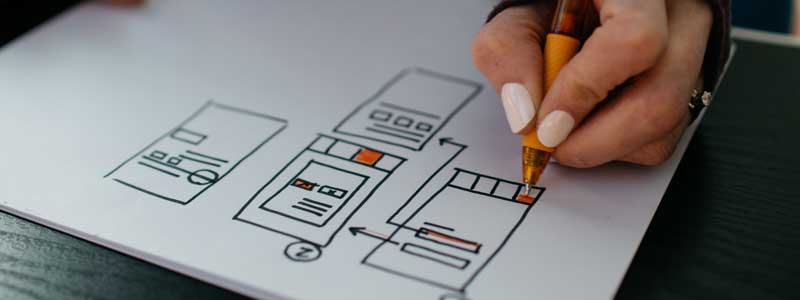When I was Group Head of UX at eDreams Odigeo I had to interview hundreds of candidates. It was a tough experience, because I was looking for a very specific profile, for a company that is evolving and transforming, for a very consolidated team. But the hardest part was confirming my suspicion that UX means whatever you want it to mean, and that anyone calls themselves a UX Designer these days.
I share here a list of things that will help you know whether or not you are really a UX designer.
You are not a UX designer if:
- You have not had direct contact with a user in more than 2 months.
- You don’t use any data to inform your design – you just use your experience and assumptions.
- You dedicate yourself to making mockups or wireframes for a project you were asked to do, but you don’t know the objectives, the success indicators, the audience profile, nor do you look at how the issue is resolved in other channels of the same company.
- You don’t think about how what you do on your screen will affect other user touch points.
- You don’t think about where the content will come from, or if it exists in other channels or touch points, or if it does, if it is consistent with what you are saying/showing.
- You work within a team, but you design the first ideas alone, on your computer, instead of on a whiteboard with your team next to you.
- You don’t share your design with your team until it is “polished”.
- Working on the design of an interface, but you have neither the previous nor the next screen at hand (to ensure consistency of experience throughout the process).
- You don’t design with your persona file handy, or something to remind you who your user is, what they need, what motivations, etc. they have.
- You don’t question your design, wondering how your user will react, feel or deal with what you are doing.
- You get hung up on whether the pixels are right but don’t ask yourself if it makes sense for your user and for the business what you are doing.
- You love what you’ve done. And don’t you think that a designer in love with his design has lost the ability to improve and innovate.
- You make design decisions to make things fit together better, without thinking about how it will affect user interaction.
- You pass a JPG or PNG to a programmer to chop it up and mock it up, with maybe some functional explanation, but without making the developer part of the design process until it is finished.
- You deliver your designs and forget about it, moving on to the next project. You don’t know how it went and you don’t go back to improve it.
- You have more excuses for what you can’t do than ideas about how to do your job well despite the limitations imposed on you.
I could go on for a long time, but I think this is more or less enough to get us started.
(I edit, to clarify some doubts that I have received)
If you don’t meet the above points, you are designing digital interfaces, but not necessarily designing the user experience. Or in some cases, not even usability, as I explain below.
There are several cases:
- We don’t do it for external reasons: they don’t give us time, they don’t want to collaborate, they don’t give us budget.
- We have a tendency to “throw miles”, to have tunnel vision when we get to the pixels and forget to look to the sides.
- We believe that we know the user so well that we are convinced that everything we do will be in their favor.
About case #1:
In English there is a saying: “As long as there is a will, there is a way”, which is something like “As long as there is a will, there is a way”. None of my jobs have given me the time to do things in the way UCD, UX, Lean UX methods and philosophies dictate. Never. Until I did it in spite of everything and everyone, and I presented results, and that convinced them. They call it “guerrilla UX” and about this, I recommend a great little book: “Undercover User Experience”, by Cennydd Bowles. I do not know if it is in Spanish.
About cases #2 and #3:
If you have no contact with the user, you’re not even doing UCD. If you design without data, neither. At most you are doing Usability -if you follow the heuristic principles-, but even Usability as a discipline recommends contact with the user, even if it is to measure the results of the interaction.
No one says you have to follow UCD methodologies if you don’t want to or feel you can’t, the UX philosophy, but then, you are an Interface Designer, not a UX Designer.
What do you think?

